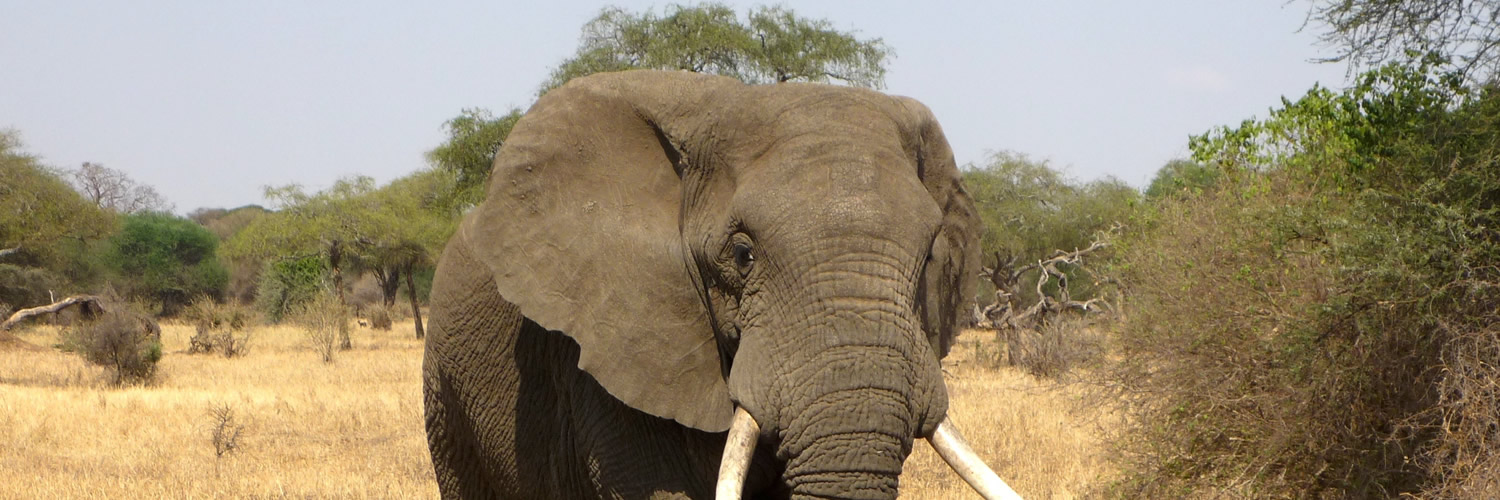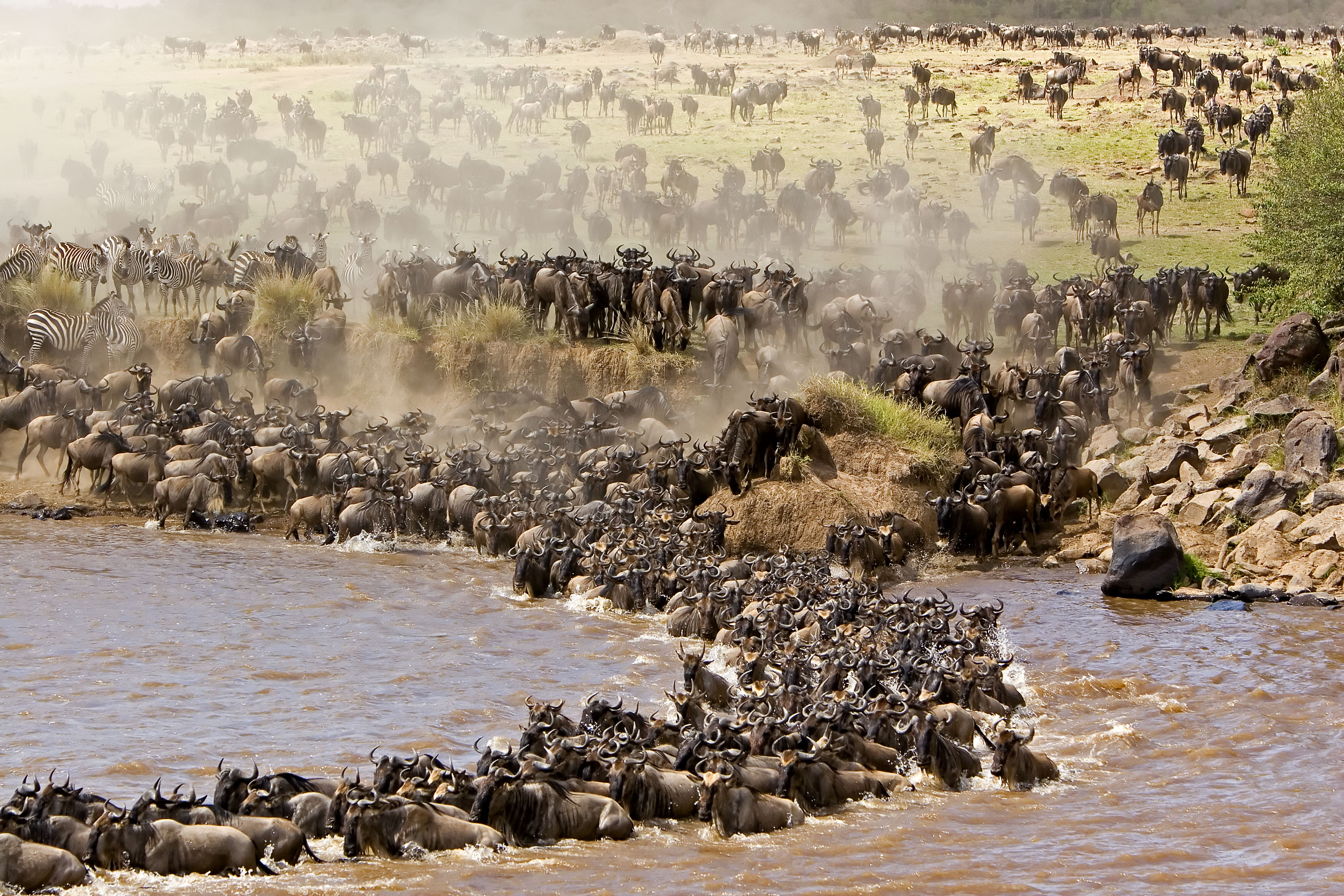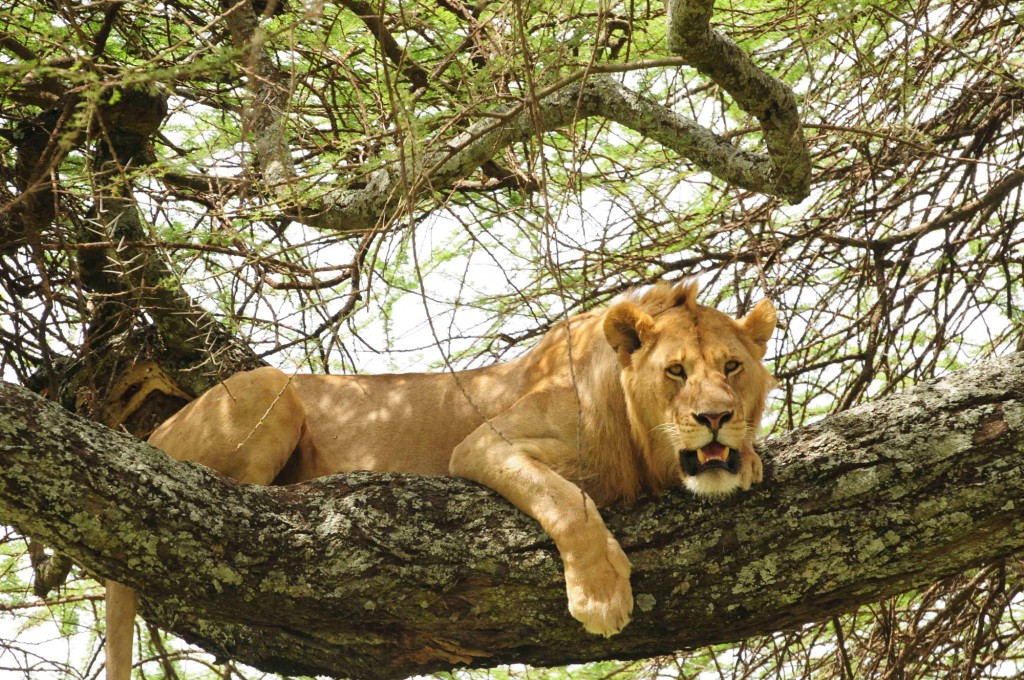Day 1: Transfer to Tarangire NP – Game Drive
Today morning our safari guide will meet you at your hotel and then brief you about this exciting safari before beginning on the drive to Tarangire National Park. This beautiful savanna park which is home to the largest population of elephants in northern Tanzania has several trees including the unique baobab trees plus a number of seasonal swamps. There are also several other animals found in this park among which are: gnus, giraffes, gazelles, buffaloes, zebras and lions.
Once you enter into the park you will be stunned with the numerous animals you will see during the game drive. You will have a picnic lunch in the park and in the afternoon do some more game viewing before heading to Tarangire River camp where you will have your dinner and spend this night.
Day 2: Transfer to Serengeti
After breakfast, drive towards the Great Rift Valley, going through Mto Wa Mbu as well as Karatu, to the Ngorongoro Conservation Area where you will briefly stop at the viewing platform for a look into the crater. You will drive through various Maasai villages as you make your way into the Serengeti National Park where you will enter through the Naabi Hill gate for a walk to nice viewpoint that offers uninterrupted views over the Serengeti savannah. As you approach the central part of the park – the Seronera Area you will encounter a large number of animals including Africa’s “Big Five” – leopards, lions, rhinos, elephants as well as buffaloes. Later in the day you will finally arrive at the Serengeti Tortilis Tented Camp found in an isolated private area, in the middle of bushed offering you a unique closeness to Mother Nature with a bright lit sky on a clear night.
Day 3: Game Drive in Serengeti National Park
Today you will have an early breakfast and then set out into the park where you will have a full day of game viewing with a picnic lunch within the park. Depending on the time of the year you take this safari you
Following breakfast, you will spend the whole day on a game drive in the Serengeti National Park and have lunch at a picnic spot en-route. Depending upon the time of year, you might even have the chance to witness the great migration with hundreds of thousands of wildebeests, zebras as well as Thompson gazelles. In October and November when the park is experiencing the short rainy season, you will easily see these herds moving from the Masai Mara Reserve of Kenyan across the northwest part of the Serengeti into the southern Serengeti plains. After the main rainy season that start in April, through May and June, these large herds slowly move back going through the north-western and western sectors of the Serengeti. With the variations in rainfall, the timetable of the animals’ movement will change as well as their route. Your safari guide will try his very best to find these animals and will ensure that you see the animals from the very best places within the game national park. Of course, the migration also draws a number of predators and if lucky, you might sight a kill in action. Later you will return to your accommodation for dinner and the overnight.
Day 4: Transfer to the Ngorongoro Crater
Today you will have a very early breakfast, before setting off on the drive from the amazing Seronera Valley area in Serengeti and return to the Ngorongoro Conservation Area. Here, the predators are more active in the cooler morning hours, and if lucky you might get a chance to see a number of them making their hunt. You will have your picnic lunch en-route at one of the areas designated for picnics. When you arrive at the edge of this legendary crater, the 19 kilometer diameter caldera will open up before you with all its eye-catching glory and here you will descend to the crater floor for a game drive following an adventurous trail. The Ngorongoro Crater which is World Heritage Site is seasonally habitat to more than 25,000 animals among which are Africa’s Big Five animals (lions, elephants, buffaloes, rhinos as well as leopards), in addition to great profusion of different bird species . Later in the day, you will transfer to Karatu Acacia Farm Lodge – a previously working farm where you will spend your night.
Day 5: Gibb’s Farm Walk
In the morning you will enjoy your breakfast at the lodge and then be transferred by car to the gate of Gibb’s farm where you will begin your walk to the Elephant Cave a place where elephants frequently come to leak salt. This is among the biggest salt leaking areas on the African continent. This morning walk is very rewarding as holidaymakers will get a chance to see various birds. At the end of the two and a half hours walk, you will have lunch at Gibbs farm.
In the afternoon after your lunch we will proceed southwards to the biggest Soda Lake in Tanzania where you will see thousands of pink flamingoes. This remote area is rarely visited by holidaymakers and is home to the people of the Datoga tribe as well as the Hadzabe Bushmen. While here you will have a personal experience of the traditional lifestyle of these native people.
Hadzabe Bush-men are traditional hunters and gatherers that speak a language which is very similar to that of the Bushmen in South Africa. Hunting is done by the men very early in the morning as well as in the afternoon using bows and arrows. When hunting down large game, they use poison arrows while for birds and smaller game non-poison arrows are used. On the other hand, the women gather wild fruits tubers as well as roots. You will have dinner and spend the night at your accommodation.
Day 6: Hunting with Bushmen, Return to Arusha – Departure
Today you will leave your accommodation very early in the morning at about 5:00am and join one of the hunting groups. This is among the most fascinating cultural encounters you will have on the African continent. After the hunt, you will return to your accommodation where you will do some target shooting using arrows before visiting the village’s to see how they locally make arrow. You will also get a chance to see how the local people from these tribes interact.
At the end of all this, you will drive back to Arusha and this will be the end of our 6 day Tanzania Safari.



